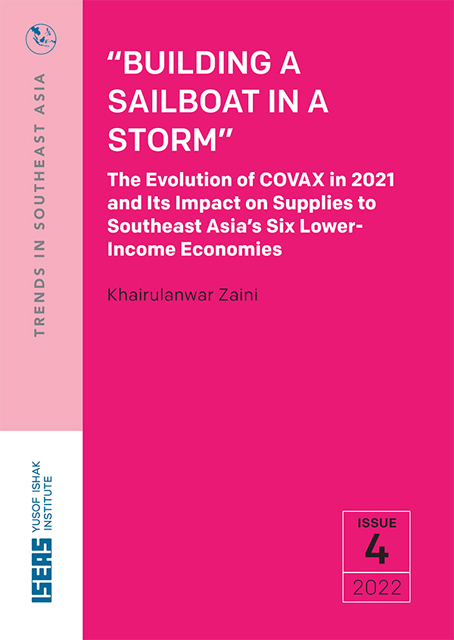
- Publisher:
- ISEAS–Yusof Ishak Institute
- Online publication date:
- September 2023
- Online ISBN:
- 9789815011418
- Subjects:
- Economics, International Economics
- Series:
- Trends in Southeast Asia

In the first half of 2021, COVID-19 vaccine doses from the COVAX Facility were in short supply, and the plan to mass produce COVAX vaccines through the Serum Institute of India (SII) faltered as the pandemic surged in India in March 2021. Due to COVAX's shift in approach towards convincing richer nations to redistribute their excess doses, the second half of 2021 saw increases in the frequency and volume of its shipments. Donors were however able to 'earmark' their dose donations and identify their intended recipients. The six Southeast Asian countries which qualified for free COVAX shots - Cambodia, Indonesia, Laos, the Philippines, Timor-Leste and Vietnam (the AMC6) - received 16 million doses in the first half of 2021. In the second half, they received 128 million doses from COVAX, 80.9 per cent of which were earmarked donations. Despite making up 7 per cent of the world population, the AMC6 collectively accounted for 24.3 per cent of all earmarked dose donations (and 25 per cent of the United States' total dose donations) to COVAX in 2021. The AMC6 greatly benefitted from COVAX's pivot to dose donations. This demonstrated the region's strategic salience to Washington and its allies, but came at the expense of vaccine equity, which the region has prudential reasons to care about. The execution of COVAX hammers home the hard truth that multilateral governance is a difficult act to pull off even with the best intentions and is not impervious to the geopolitical interests and agendas of the major powers.
 Loading metrics...
Loading metrics...
* Views captured on Cambridge Core between #date#. This data will be updated every 24 hours.
Usage data cannot currently be displayed.